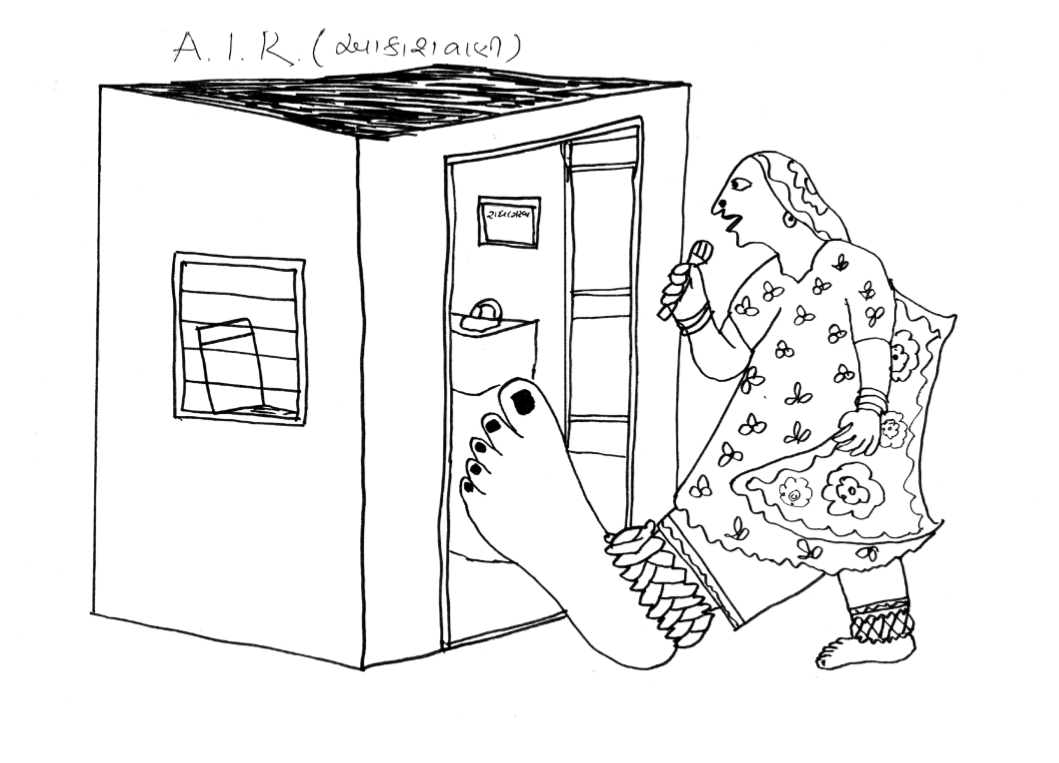Rather than well-meaning but self-limiting explorations of gender-related problems, the festival celebrates “important issues as well as their cinematic treatment”, said Anupama Srinivasan, the festival’s co-director and a filmmaker and editor in her own right. “This year, we are focusing on the general programme, and we have a rich and diverse list of films.”
There are 57 titles from India and around the world. Among the feature-length documentaries are The Last Adieu, Shabnam Sukhdev’s tribute to her father, the renowned documentary director S Sukhdev, and My Name is Salt, Farida Pacha’s acclaimed account of one family’s year-long quest to produce the white mineral in Gujarat’s Kutch region. In Self Portrait: Building a Bridge at 47 KM, Mengqi Zhang revisits China’s Great Famine of 1959-1961 through interviews with residents of her village. Kyoko Miyake’s Beyond the Wave (also known as My Atomic Aunt) explores the continuing effects of the 2011 meltdown at the Fukushima nuclear power plant in 2011 through the experiences of her female relative.
The festival includes a selection from the Yangon Film School in Myanmar and a set of experimental productions curated by Priyanka Chhabra. “In the past, we have done a focus on a country, such as Taiwan, South Korea and Iran,” said festival co-director Uma Tanuku, who has made the documentary Nighthawks. “This year, we have other packages, such as the sound section and the experimental films.” The experimental set includes Chhatrabhang, NinaSugati SR Shivdasani Rovshen’s little-seen experimental feature on caste in rural India from 1975.
There is a whole section devoted to visual-free sound works. Introduced last year, the Soundphiles section comprises audio projects and installations. According to the curatorial note by Samina Mishra and Iram Ghufran, “The works in this edition explore time in diverse ways – as a season in Pahadi Pastoralists, as aging in Swimming Pool, as a generational gap in Lonely Lives, as a fraught media environment of the Emergency Control Room, as tradition to be discarded in Saving Disgrace, as field recordings of a rivulet sped up in Riverrun 2013, as a loss and a waiting in Number Unreachable, and as an experience of listening in time through time in Levels.”
Also in the programme are animated films, short fiction, and Batul Mukhtiar’s movie Kaphal, which has been produced by the Children’s Film Society of India. “The films are all made by women, but the topics can be about everything,” Srinivasan said. Some truths about what it means to be a woman and a filmmaker have been explored in the 80-minute Profession: Documentarist being shown at the festival, in which seven Iranian filmmakers lay bare their professional and private concerns and experiences.
The three-day event at the India International Centre, which is free and open to all, will be accompanied by three art shows. Priya Kuriyan’s Delhitantte consists of drawings that seek to understand the workings of the national capital. Shrutishyam’s watercolours, grouped under the heading Now You See Them Oranges and Lemons, draw parallels between marine creatures and typefaces. The IAWRT has also collaborated with the feminist publishing house Zubaan to showcase a few of Kutch artist Radhaben Garva’s illustrations that were collected for the book Picture This: Painting the Women’s Movement last year.

Radhaben Garva illustration courtesy Zubaan.












